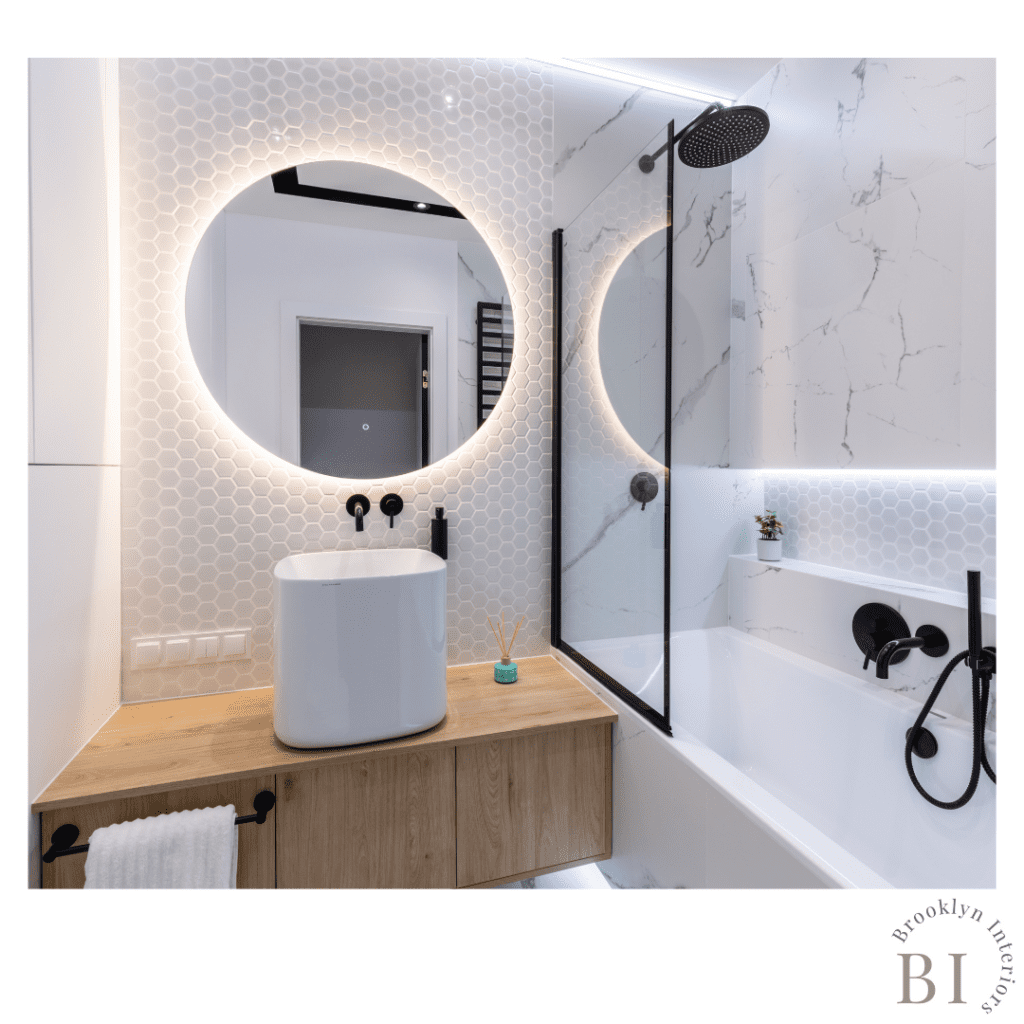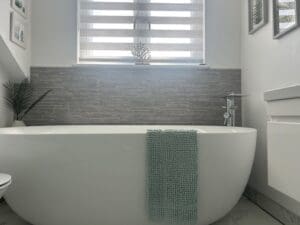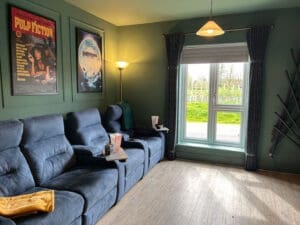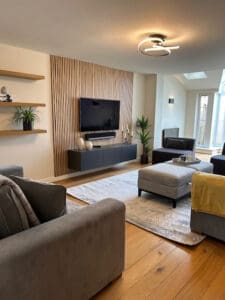Choosing the right colours for your home interior can be exciting and overwhelming. The colours you choose will set the tone for your space, influence your mood, and create a cohesive look that reflects your personality. I want to make it a little easier for you to create a space you love.
Colours play a powerful role in how we experience a space. They can:
- Set the Mood: Warm tones like reds and yellows energize, while cool tones like blues and greens calm and soothe.
- Influence Perception of Space: Light colours can make a room feel larger, while dark colours create a cosy, intimate atmosphere.
- Reflect Your Personality: Your colour choices can make your home feel uniquely yours, from bold and dramatic to subtle and serene.
My advice for choosing the perfect colours
- Start with a Vision
Think about how you want your space to feel. Ask yourself:
- Do you want a space that is calm and relaxing or vibrant and energizing?
- Are you aiming for a modern, minimalist look or a warm, traditional vibe? Creating a mood board with images, fabric swatches, and paint samples can help you refine your vision.
- Consider the Room’s Function
The purpose of a room can help guide your colour choices, for example:
- Living Room: Welcoming and versatile shades like soft neutrals or warm tones are good for this room.
- Bedroom: Choose calming colours such as blues, greens, or muted pastels to promote relaxation.
- Kitchen: Energizing colours like yellows and bright whites work well in this lively space.
- Home Office: Blues and greens enhance focus, while pops of yellow can boost creativity.
- Use a Colour Wheel for Inspiration
The colour wheel is a great tool for exploring colour combinations;
- Monochromatic Schemes: Use varying shades of the same colour for a subtle, cohesive look.
- Complementary Colours: Pair colours opposite each other on the wheel (e.g., blue and orange) for a bold and balanced contrast.
- Analogous Colours: Combine colours next to each other on the wheel (e.g., blue, teal, and green) for a harmonious effect.
- Consider Natural and Artificial Light
Lighting can dramatically change how a colour looks in a room:
- Natural Light: Colours may appear brighter during the day. South-facing rooms enhance warm tones, while north-facing rooms might soften them.
- Artificial Light: The type of bulbs you use—warm white, cool white, or daylight—can alter the appearance of your chosen colour. Test paint samples in different lighting conditions to see how they look throughout the day.
- Choose a Base Colour
Select a base colour that will anchor the room. This might be a neutral tone like gray, beige, or white, or a soft hue like pale blue or sage green. Once you have a base, you can build a palette around it.
- Add Accent Colours
Accent colours bring personality and depth to your space. Use them sparingly for contrast and interest:
- Incorporate accents through furniture, artwork, pillows, or rugs.
- Try bolder hues like mustard yellow, navy blue, or deep burgundy to add drama without overwhelming the space.
Always test your colours
Use a good sized piece of paper (approx. A3) and paint it in your chosen colour.
Stick a sheet to each wall in the room and leave it there for a few days and see how you like it in different lights.
Colour Trends
If you’re looking for inspiration, and want a colour that’s on trend (2025) here are few suggestions;
- Earthy Tones: Warm terracotta’s, muted greens, and clay-inspired hues for a grounded, natural feel.
- Soft Neutrals: Creams, beiges, and light grey create a timeless, airy vibe.
- Bold Accents: Deep jewel tones like emerald green or sapphire blue for a luxurious touch.
Choosing the perfect colour for your home interior is all about creating a space that feels right for you. Take your time, experiment, and trust your instincts. The right colour palette can transform your home into a place of comfort, beauty, and inspiration.







